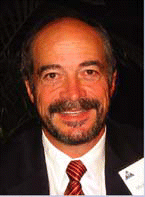I would like to commend Robert H. Miller, MD, on a well-balanced discussion in the February issue of ENToday concerning the pros and cons of pay for performance (P4P).

Well Tuned: Maintenance of the Professional Voice: Part 1 of 2
Frank Sinatra purportedly said of Rosemary Clooney that she was able to hit a note right in its center.

An Otolaryngologist as Flight Surgeon: One Doctor’s Experience in Operation Iraqi Freedom
This is a short narrative of the experience of this otolaryngologist, who was deployed to Iraq to participate in Operation Iraqi Freedom.

Otolaryngologists on the Front Lines

Device Kit Reduces Need for Biopsy in Oral Cancer Diagnosis
The gold standard for oral cancer diagnosis is visual examination followed by biopsy and histological analysis of suspicious lesions.

Fibrin Glue Makes Septal Perforations Easier to Repair
Doctors, faced with challenging problems of mending nasal septal perforations, suggested that the use of fibrin glue to hold into place an AlloDerm graft is effective and likely cost-saving.

Papillomatosis Tissue Utilized to Correct Anterior Commissure Webbing
Doctors said they have successfully corrected anterior commissure web formation in papilloma patients with a unique endoscopic microflap laryngoplasty that actually makes use of excess tissue produced in patients with recurrent respiratory papillomatosis.

Sinuplasty Gaining Momentum for Sinus Procedures
Balloon sinuplasty-still a controversial area for otolaryngologists-appears to be gaining favor, although functional endoscopic balloon remodeling is still in its infancy, said Raymond Weiss, MD, medical director of the Sinus Center of the South in Ocean Springs, MS.

In-Office Transnasal Esophagoscopy Appears Safe, Cost-Effective
A three-year retrospective study of in-office transnasal esophagoscopy appears to show that the procedure can be adopted for safe use in private practice-and with considerable savings to the health care industry when compared with rigid esophagoscopy.
Medical Identity Theft: Under-Reported, Under-Researched, More Common than Generally Known
- « Previous Page
- 1
- …
- 54
- 55
- 56
- 57
- 58
- …
- 61
- Next Page »